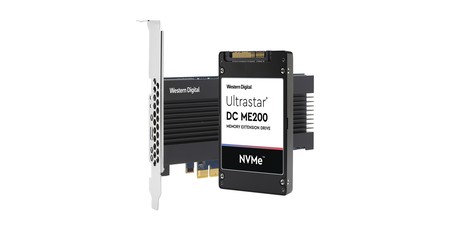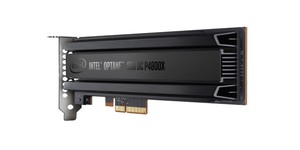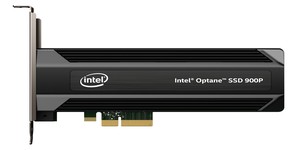WD announces Ultrastar Memory Extension Drive range
November 13, 2018 | 11:21
Companies: #intel #micron #western-digital

Storage giant Western Digital has announced it is joining Intel in offering flash-based add-ons which act as an extension to system dynamic RAM (DRAM), rather than non-volatile storage, starting with 2.5" U.2 and HH-HL add-in card form-factors.
Developed in partnership with Micron under the name 3D XPoint, Intel's Optane is designed to bring the performance of non-volatile flash memory closer to that of volatile dynamic RAM (DRAM). It's little surprise, then, to find that the company's first launch aimed at the data centre market with devices that could be used as high-speed storage or to expand system RAM. When configured in the latter mode, the Optane SSD DC P4800X's 375GB of flash becomes visible to the system as DRAM, boosting a server currently holding 64GB of true DRAM to 439GB.
Now, Western Digital is getting in on the act with the announcement of the Ultrastar DC ME200 Memory Extension Drive family. Based on Non-Volatile Memory Express (NVMe) 1.2 on a PCI Express (PCIe) 3.0 bus, the drives arrive in two flavours: a 2.5" U.2 form factor, looking like a traditional SSD, and a half-height half-length (HH-HL) PCI Express add-in card. Regardless of option chosen, the drives are available in 1TB, 2TB, and 4TB capacities - considerably higher than Intel's Optane equivalent.
There's a cost to this, of course - and it's not just the literal cost of buying the devices, which Western Digital claims can be offset by reducing the amount of physical DRAM in a server using a suggestion which sees the functional memory of an example system doubled while reducing overall total cost of ownership by 10 percent - and it's performance: While, like Optane, WD's flash memory comes close to the performance of true DRAM, it doesn't quite get there. According to WD's internal testing, a 768GB server running in full DRAM, 1:4 DRAM:flash, and 1:8 DRAM:flash ratios sees the switch to memory expansion drop the performance to 91 percent and 85 percent respectively.
According to WD's Chris Marsh, the secret to the surprisingly minimal performance impact comes less from the flash memory components themselves and more from the smarts added to them: 'Near-DRAM performance is achieved through the use of 20+ types of algorithms to predict, prefetch, and optimise memory and locality, as opposed to the typical single algorithm that is typically implemented in hardware (e.g., adjacent cacheline prefetch),' Marsh claims. 'It uses machine learning, pattern recognition, code scanning, and other techniques, which allows the Ultrastar DC ME200 to massively prefetch addresses that the CPU will be using thousands of cycles ahead, so by the time the CPU needs those addresses, they already are waiting in DRAM.'
Switching to the drives requires no changes to client software, Marsh claims, and is supported natively in a variety of Linux distributions. Thus far, though, the company has been silent on the price of the drives; more information is nevertheless available on the official website.

MSI MPG Velox 100R Chassis Review
October 14 2021 | 15:04








Want to comment? Please log in.